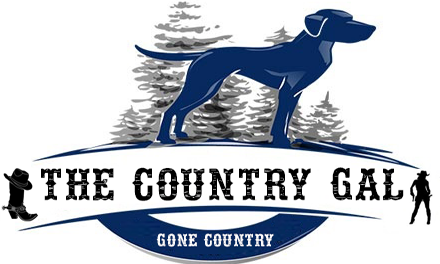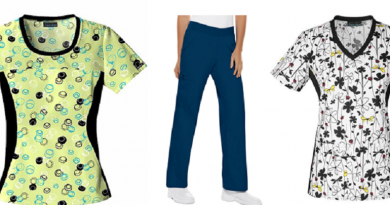How To Pick A Good Shirt For Men
While sorting my wardrobe, I was able to realize the importance of the shirts in my style. They are a mainstay of my look. It is true that I wear some t-shirts. This is probably because I love the convenience of the shirt, which unlike the t-shirt is not a static garment. Buttoned or unbuttoned sleeves rolled up, the shirt adapts. More than ever, it is still a centerpiece of the male wardrobe, a must that we should choose carefully!
“Elegance is concentrated in the shirt” also Oscar Wilde, poet and connoisseur of menswear. To help you choose a good shirt, I propose you to discover step by step, the points I check when I’m about to buy a shirt. The most curious readers will be satisfied because I have decided to make this product a real practical guide to the shirt. Attention exhaustive reading, but so exciting!
Checklist for choosing a shirt
- The Neck
- The armhole
- The pattern alignment
- The cuffs
- Fabric
“Shirt is judged by his collar and a man with his shirt” Madeleine Ferron, The Scarlet Baron. The first thing I look at is the collar. There are a multitude of passes (English, Italian, club, American, etc.) but it is difficult to classify because you can find different names for the same collar depending on the shop, the tailor or the time! Don’t be surprised to find the phrase “club button down”, “semi-cutaway” or “far-cutaway” less traditional. Here is an illustrated list of basics.
Collars for Dress shirts:
- Italian or cutaway collar: A very open to widely spaced collar points neck (sic) point backwards. This is a modern style, popular Italian and is perfect for large knots ties (besides, I never wear a shirt with an Italian collar without a tie). This is my favorite style and I focus on it with a suit.
- The French Point: Alpha Pass. This is a standard collar template that gives homogeneous proportions. It can be worn with everything and in all circumstances. It is a perfect collar for those who do not want to take risks. I wear it with or without a tie.
- The Neapolitan Point: You will recognize its large parts with a foot high collar (Collar height: piece of cloth on which is sew the collar). It has the characteristic of good out of the jacket and ride high on the neck. I only recommend a dress shirt, and for people whose neck is small. I wear it with a big bow tie and exclusively with a suit.
- English collar: a very formal look for the point that has a mounting tab behind the tie knot that can hold both ends of the collar. One type of collar that I find very formal.
Collars for casual shirts:
- American collar or button down: It is recognized from a distance with buttonholes at the end of each collar point of the neck that attach to the front flap of the shirt. Often crossed this style because of the popularity of the oxford shirt.
- The round or “club collar” collar: A sort of Peter Pan collar for men! It is a small pass very retro look whose legs are rounded. I do not wear this type of collar because I think it does not suit my body type. It also may be a bit too feminine for my taste.
- Col officer: A little short neck and without flap that has a button. I’ve never focused on my shirts. This is a special but very stylish collar.
- Mao collar: He has no leg or flap. It was only a foot collarless button – what differentiates the collar.
Choose a good collar for a dress shirt
I always prefer a thick collar with large areas that hide the tie under the collar, which give a masculine (approx 8cm.) look. For a narrower neck it would look too feminine, and finally it goes with my costume and do not disappear beneath. Remember that the collar of the shirt should always get higher than that of the jacket to raise your figure. We often speak of the cervix, but less is known that there are 3 types of necklines (part on which we have just put the collar) and they determine the look of your neck. Here are the different necklines and as I make my choice:
- The English neckline: very narrow neck that goes high on the neck and gives little comfort but gives a very formal look.I find it perfect for the office, but it is less comfortable.
- The French Neck: Less high than the English, it gives a less formal look.It is also ideal for the office and allows you to be a little more comfortable than in an English neckline.
- The Italian neckline: It’s a wide neckline that falls down.It gives a good ease of movement and a more casual look.This is the perfect collar for a casual shirt.
In ready-to-wear is often hard to choose the neck because it is not a requirement specified by brands. Even the brands focusing on the shirts only rarely consider this point.
The stiffness of the collar
Once the neckline chosen (or not), I check the rigidity of the neck that is an important point. A stiff collar shows nice shirt quality without the guarantee. But a stiff neck is primarily a passport for elegance. There is nothing more awkward than a soft collar that goes in all directions. To keep the collar in place, you will find in the collar a little hard element called “Collar Bone” which stiffens the collar and keep the collar points straight since these points must always stay glued to you. They can be sewn in the collar and be removable, and I prefer the latter. In general, the stays are plastic and removable stays allow the change once they are no longer rigid. Most fans can buy metal stays or horn to stiffen the collar perfectly. However, be careful not to lose!
The armhole
Next step, the armhole is the center of my attention. In general, the seam of the sleeve (below along the arm) is an extension of the seam that met the pan back and front of the shirt (on the side). This alignment is considered in shirt, simplicity. However, some tailors have noticed that armhole seam which would be shifted forward avoided overlay too much tissue layers and improve the ease and ironing. This is why we find this type of sewing shifted some shirts customized upscale. However, do not expect to find an armhole shifted on a shirt ready-to-wear, it is a detail too technical.
Further into the details, I check how the shirt is sewn at the armhole, sleeve and sides of the front and back of the shirt. Ideal is to have dense stitches and sewn in English inconspicuous points. We find mostly two types of stitching: Double stitching and folded English seam.
- The double stitching is an identifiable flat seam.It is common and does not contribute to the construction of the shirt.
- English seam is the one for you. To recognize it, just find a small tissue bulge on the back (right in the photo below on a shirt Natty Shirts I wear for several months). This technique is more complex than the double stitching and gives a thinner, discrete outcome.
Remember that the goal is to see fewer seams and clothing details on the outside of the shirt.
Alignment of Pattern
The shoulder is an area where I carefully check control the alignment of pattern. A shirt made with care is primarily a shirt to be worn. But it is also a fabric frame and sometimes patterns. A quality shirt is recognizable to how those match, mostly scratches (right) or the frame (left) are aligned between different pieces of fabric. This is the case at the armhole where the stripes of the sleeve should follow that of the top of the shoulder (as in these photos. This detail will not improve comfort, but it’s a little more aesthetic easily identifiable. And then it’s a matter of principle! Remember that essentially lies in the details.
The Cuff
After armhole, I go straight to the “Cuffs” of the shirt at the end of the sleeves. There are three types:
- The single cuff with rounded corners, square or broken.
- The folded cuff called “musketeer” which closes with cufflinks.
- Neapolitan cuff, between simple and folded.
Some will swear by the folded cuffs for very elegant, but I think for a dress shirt can be worn single or folded cuffs, provided they are wide and rigid, and especially to the right length. Musketeer or classic, it’s as you wish, but let yourself be guided by good taste and flee headlines to 4 square buttons! Headlines, like the collar, must not be heat-sealed to prevent them blister (the control procedure is the same as for the collar).
How to recognize good fabric
A shirt fabric is mainly of a few grams of yarn and buttons. In most cases, the shirts are made of cotton, but there are also linen shirts, synthetic cotton mix or even silk while choosing a shirt fabric, two things are to be considered. Yarn quality and the thickness of the fabric.
As for jeans, the quality of the fabric depends on the quality of the yarn. In the case of a cotton shirt, the best yarn is one called a 2 ply or twisted (“two-fold cotton”). This yarn is made from long-staple cotton are spun to give a first fine wire, then this thread will be assembled with a second identical thread that will give a “double” thread (like the triple wire used for jean). This type of spinning gives a wire – and ultimately a tissue – the most beautiful colors and stable over time (due to the production of this yarn fineness), but also a fabric softer, stronger, and that will age better. There are only benefits!
Some manufacturers use the terms smoky “higher cotton” type or “superfine cotton” to disguise the fact that they do not use two-ply cotton. Flee these sleep merchants! You will wear on you better!
Keeping these points in mind will help you pick the best out of many.
Zaid Irfan : Co-founder Natty Shirts








When it comes to men’s fashion, a good shirt can make or break an outfit. Knowing how to pick the right shirt is essential in creating a wardrobe that is both stylish and appropriate for any occasion.
Click Here https://myappliancerepairusa.com/shrink/top-boiler-replacement-company-in-bomoseen-vt/ Boiler Replacement Company in Bomoseen VT
This is a perfect guide to buy a men’s shirt and honestly speaking for the first time i have learnt about the collar and arm holls.
Professional Barn Construction Services In Bloomfield IA